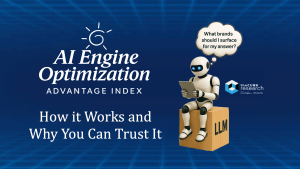This AnalystANGLE is an analysis of the current state of data management in e-commerce. The article highlights the shift towards first-party data tracking as third-party cookies become less reliable. It stresses the importance of developing a data warehouse for in-depth analytics and suggests using Customer Data Platforms (CDPs) to streamline data integration and analysis. The conversation also touches on the balance between utilizing data and respecting user privacy, emphasizing the need for brands to respect boundaries to maintain consumer trust. Lastly, the article discusses the cost considerations of complex data systems and the strategic value of predictive analytics in understanding customer behavior.
Building a Robust Data Ecosystem for E-commerce
In the rapidly changing and fiercely competitive world of e-commerce, it has never been more crucial to comprehend your customers through data. This is a detailed analysis of a discussion between Rob Strechay, Managing Director of Cube Research and Elite Analyst, and Edward Upton, the founder of Little Data. The conversation reveals the intricacies and essential nature of constructing a strong data framework.
The Shift from Third-party Cookies
There is a massive switch coming to data collection for e-commerce and beyond, with the importance of first-party tracking being top of mind for all organizations as third-party cookies become obsolete and, in some cases, illegal. The key is to collect data in such a way that, while it may not initially provide personal identifiers, it allows for a comprehensive understanding of customer behavior once they login or make a purchase. Or to be able to use the anonymized data for things such as cohort analysis, sales journey, or cart abandonment.
Data Warehousing and Analysis
Small organizations may find the task of setting up a data warehouse overwhelming, but it’s crucial for protecting, storing, and analyzing data over time. Historical data plays a vital role in developing predictive models and tailoring marketing strategies. Cloud SaaS-delivered data warehouses and data lakes, such as Google BigQuery, Snowflake, Databricks, MongoDB, and Amazon Redshift, are popular options for storing analytical workload data. These warehouses and lakes can be used to perform various transformations and models, creating “data products” like recommendation engines and churn analysis for reverse ETL. More information on data products will be shared later.
Leveraging Customer Data Platforms (CDPs) and Data Lakes
The benefits of using a commercial Customer Data Platform (CDP) are significant, especially for businesses that lack data engineering and platform engineering expertise. These platforms simplify the process of gathering and utilizing data, often with built-in support and expertise. Although powerful platforms like Segment offer excellent capabilities, they come at a higher cost, which might not be immediately clear to all e-commerce brands.
Recent innovations such as Twillio Segment’s Delta Sharing announcement at the Databricks Data + AI Summit make it easier to perform complex data operations that require a data science environment. This can be achieved by moving data from a CDP into data lakes, which might be necessary for certain use cases, such as building a recommendations engine.
In the rapidly advancing field of AI, having access to raw data in your data warehouse is essential for leveraging AI effectively. This is especially important for predictive analytics, which can help e-commerce brands understand and influence customer behavior strategically.
Privacy Considerations
There needs to be a balance between utilizing data and respecting privacy. The use of demographic data for targeted marketing has the potential to be creepy and brands must maintain ethical boundaries in order to retain customer trust. While combining first-party tracking with third-party lists and information can help provide a complete view of a customer, it also comes with a responsibility for the privacy and protection of that data. The US lags behind Europe in terms of the ability of individuals to control their own data. The two markets differ in their expectations for data privacy. Organizations that operate in multiple regions face a difficult choice: either have different data privacy policies for each region or adopt the strictest policy and develop data products accordingly.
Our ANGLE
The journey to a mature data ecosystem can be complex. The rewards in customer insights and business growth can be substantial. By focusing on data collection, leveraging the right tools, and maintaining a balance between data utility and privacy, e-commerce brands can build a data-driven foundation for success.
Here are actionable advice for e-commerce brands looking to mature their data practices:
- Focus on data collection and first-party tracking methodologies, not just Google Analytics.
- Consider partnering with a packaged CDP to simplify data pipelines and analytics. Use this to learn what data matters to your organization’s bottom line and what data products you can and can not build.
- Be mindful of transaction-based pricing and the scalability of your data solutions.
- Stay informed about data privacy regulations to avoid hefty fines and protect customer trust.
This research note is based on first-party research, end-user organization conversations, and a conversation between Rob Strechay, Managing Director and Analyst theCUBE Research, and Edward Upton, Founder, and CEO of Littledata
Disclosure: theCUBE Research is a research and advisory services firm that engages or has engaged in research, analysis, and advisory services with many technology companies, which can include those mentioned in this article. The author does not control any equity positions with any company mentioned in this article.
Analysis and opinions expressed herein are specific to the analyst individually, and data and other information that might have been provided for validation, not those of theCUBE Research or SiliconANGLE Media as a whole.



